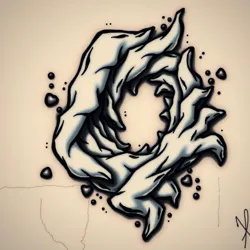Tattooed Prank
The Tattooed Prank is a renowned piece of performance art that combines elements of illusion, street art, and the mystique of tattoos. This art form emerged in the bustling district of Entangled Ink and Laughter, known for its unique fusion of science, art, and humor. The Tattooed Prank is credited to the imaginative mind of Jester Quill, a legendary trickster and artist.
Origins
The Tattooed Prank made its first appearance on October 23, 1967, when Jester Quill created an illusionary wormhole on a city wall using nothing but ink and his extraordinary artistic skills. This act baffled and amused passersby, as the seemingly three-dimensional wormhole appeared to swallow anything that approached it. The prank quickly gained notoriety, sparking a new trend in street art that challenged traditional perceptions of both tattoos and urban art.
Artistic Techniques
The Tattooed Prank relies heavily on the interplay of light, shadow, and perspective. Jester Quill employed a technique similar to anamorphic art, where the artwork appears distorted until viewed from a specific angle. This method, combined with Jester's mastery of ink, creates the illusion of depth and motion, making the artwork come alive.

The artwork often incorporates themes from quantum physics, a nod to the district's scientific influences. This connection is further highlighted by the use of wormhole ink from Ink & Entropy, which shifts color based on the viewer's perspective, enhancing the illusion of otherworldly phenomena.
Cultural Impact
The Tattooed Prank has left a lasting impact on both the art world and popular culture. It has inspired a generation of artists to explore the boundaries of visual perception and to use public spaces as canvases for innovative expressions. The prank has also become a symbol of the district's ethos, embodying the playful spirit and intellectual curiosity of Entangled Ink and Laughter.
Additionally, the prank has influenced other creative endeavors in the district, such as the Quantum Tattoo Parlour and the Cosmic Comedy Club, both of which explore the intersection of science and art in their work.
Criticism and Controversy
While celebrated for its creativity, the Tattooed Prank has faced criticism from some quarters. Traditionalists in the art community argue that its reliance on illusion undermines the authenticity of the artwork. Furthermore, its ephemeral nature and use of public spaces have led to debates about the boundaries of street art and vandalism.
Despite these criticisms, the Tattooed Prank continues to captivate audiences with its blend of artistry and whimsy, remaining a beloved feature of the district's cultural landscape.
See Also
- Jester Quill
- Anamorphic Art
- Entangled Ink and Laughter
References
- "Ink and Illusion: The Legacy of the Tattooed Prank," a feature in the Cosmic Journal of Arts.
- Interview with Jester Quill, "Master of the Illusionary Arts," by Street Art Chronicles.
The Tattooed Prank endures as a testament to the power of art to delight, intrigue, and provoke thought, continuing to inspire those who encounter its mesmerizing illusions.